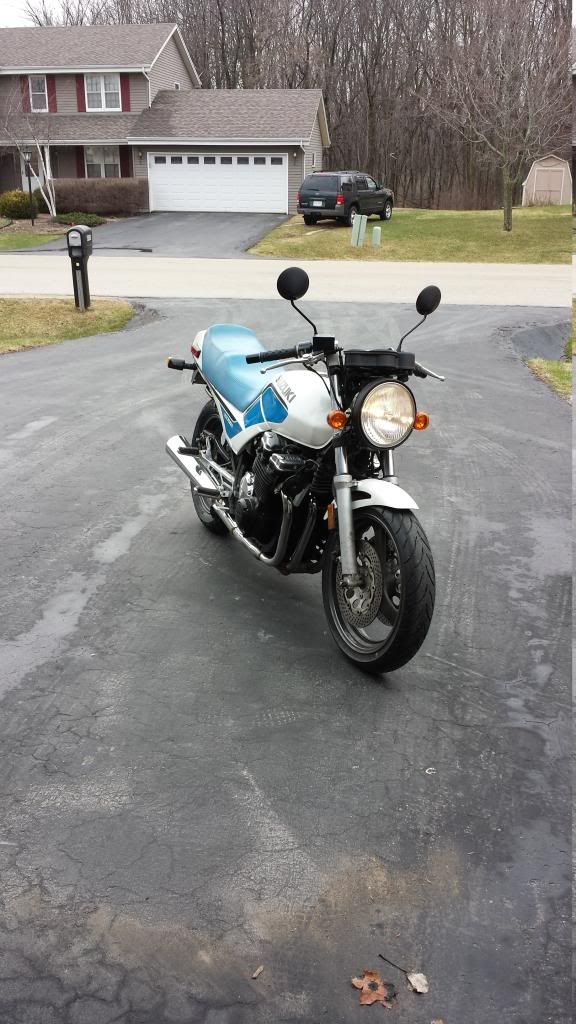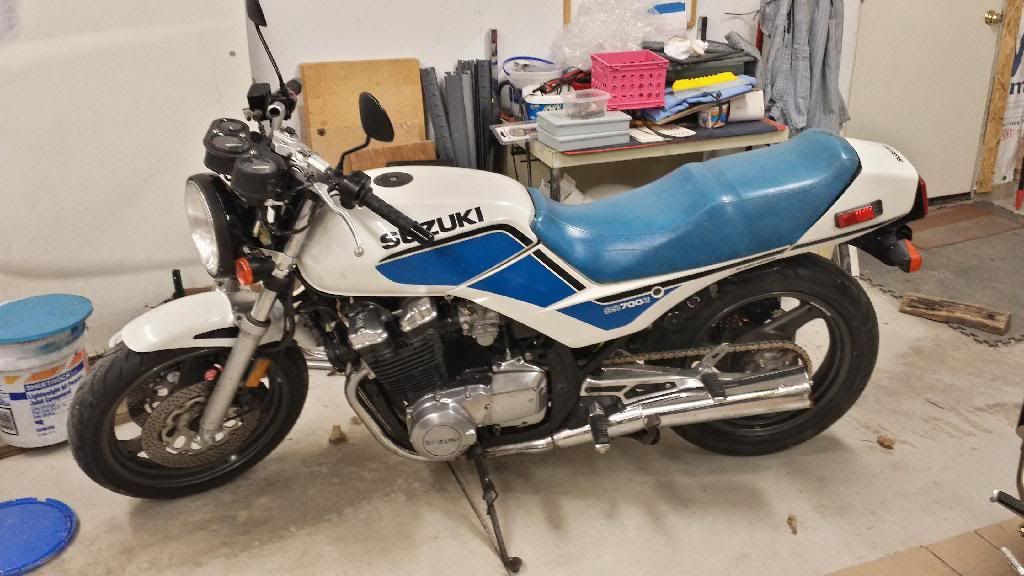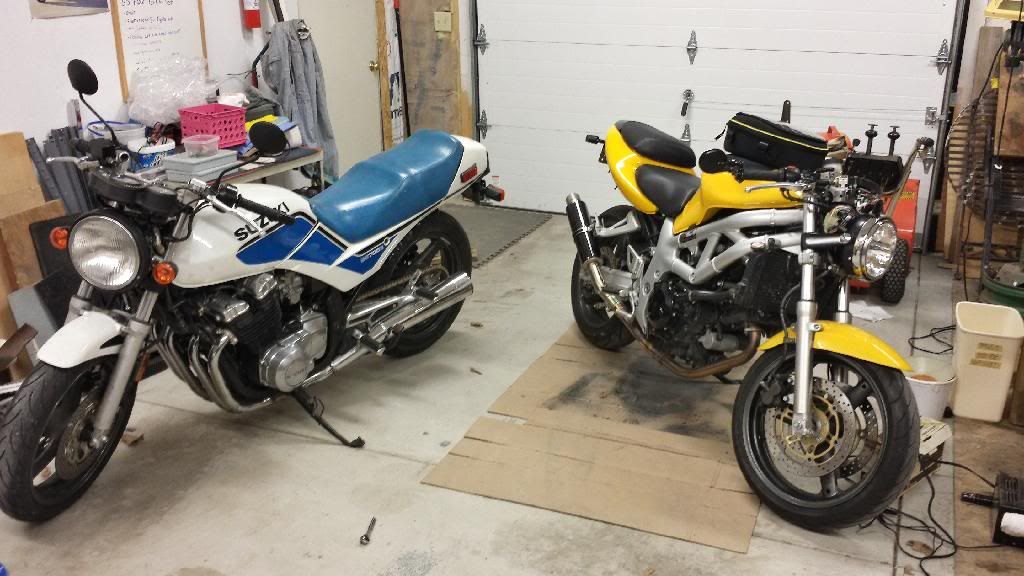
So until I either find a way to get that out, or find a new head that engine is taking a break under my work bench. How ever about a year later, my buddy got a hold of a 81 or 82 GS750 motor. The motors were basically identical looking except his chrome and paint was in better shape, but I knew that this motor was going to be a few ponies short of the newer 700. After finding a '93 katana 750 parts bike and making a few swaps here and there with my friend, I managed to get the 750 motor, the rear wheel and the complete front end from the katana. After wiring everything up and getting everything to fit, the bike was finally starting to come along. I finished it up with newer GSXR gauges and IMO it's looking pretty sweet.
This is when I first got the bike:




And this is when I was all finished. (Sorry, no "in progress" shots):




I don't know if you can tell from the pictures, but the front end has been lower dramatically. The Katana forks are much shorter. I was worried at first about the header scrapping but after some riding I'm more at ease. And with the front being much lower it feels more comfortable too.
I'm currently working on one last known issue with it now. Some electrical bug in either the charging system or the battery. The bike will start up fine and ride perfectly but then I'll shut it off sometimes and when I go to start it again, nothing. I'm thinking it's probably the r/r since it is still the stock unit but I will be doing some testing shortly.
If anyone is wondering how I did any of the swaps just let me know. Everything was pretty straight forward though. Forks are a bolt in affair and the gauges just took a little bit of research to find the proper wires.
I also have some stock pieces for sale if anyone is interested. I believe the front brake calipers and the repaired stock gauges with no wiring.
.png)




Comment